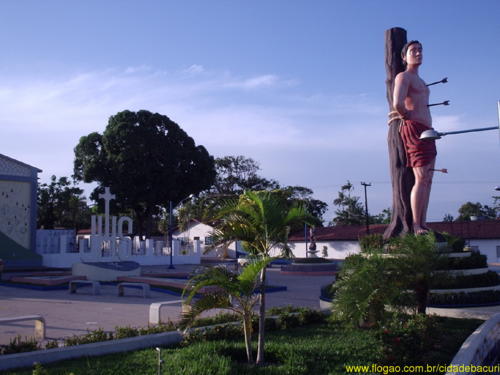|
Baixada Maranhense
Chama-se Baixada Maranhense a região a oeste e sudeste da Ilha de São Luís, formada por grandes planícies baixas que alagam na estação das chuvas, criando enormes lagoas entre os meses de janeiro e julho. Baixada Maranhense no período chuvoso. Essa região se estende por mais de vinte mil quilômetros quadrados e abrange cerca de vinte municípios, dentre os quais São Bento, Viana, Pinheiro, São Vicente Ferrer, Arari, Anajatuba, Pedro do Rosário, Peri Mirim, Palmeirândia entre outros, a Ilha do Caranguejo, na Baía de São Marcos, o Campo de Perizes, ainda na Ilha de São Luís e outras regiões. O descobrimento da região teria sido no final do século XVIII, e sua colonização começou no início do século XIX por João Alves Pinheiro, que depois de ter partido de Alcântara, sede da capitania de Cumã, fixou residência, e ao redor desse local, foi fundada a vila de São Bento de Bacurituba, em 1833, depois tendo sido fundada a cidade de São Bento e outros municípios. A economia da Baixada Maranhense é basicamente de subsistência e as principais atividades econômicas são extrativismo vegetal(babaçu) e pesca. A maior parte da água consumida nas cidades da Baixada Maranhense é proveniente dos campos alagados ou de rios como: Pericumã, Mearim, Pindaré. No século XIX, a Baixada Maranhense era um grande pólo produtor de algodão, exportado para a França, Inglaterra e Holanda, produto que depois da independência do Brasil, deixou de ser plantado em grande escala, contribuindo para a decadência do Maranhão. text in English It's called low lands to the west and southeast region of the island of São Luís, formed by large low plains that alagam in the rainy season, creating huge lakes between the months of January and July. Low lands during the rainy season. This region spans more than twenty thousand square kilometers and covers about twenty municipalities, among which St. Benedict, Viana, Pine, St. Vincent Ferrer, Arari, Anajatuba, Pedro del Rosario, Peri Mirim, Palmeirândia among others, the Island crab in Bay St. Mark the field Perizes still on the Island of St. Louis and elsewhere. The discovery of the region would have been the end of the eighteenth century, and its colonization began in the early nineteenth century by John Alves Pinheiro, who after party Alcantara seat of captaincy of Cumã, settled, and around that location was founded the town of St. Benedict of Bacurituba in 1833, after having been founded the city of St. Benedict and other municipalities. The economy is basically the low lands for subsistence and the main economic activities are extraction plant (babassu) and fishing. Most of the water consumed in cities is from the low lands of flooded fields or rivers as Pericumã, Mearim, Pindaré. In the nineteenth century, the low lands was a major production center of cotton exported to France, England and Holland, that product after the independence of Brazil, ceased to be planted on a large scale, contributing to the decay of Maranhão. Total de visitas: 108952 |

